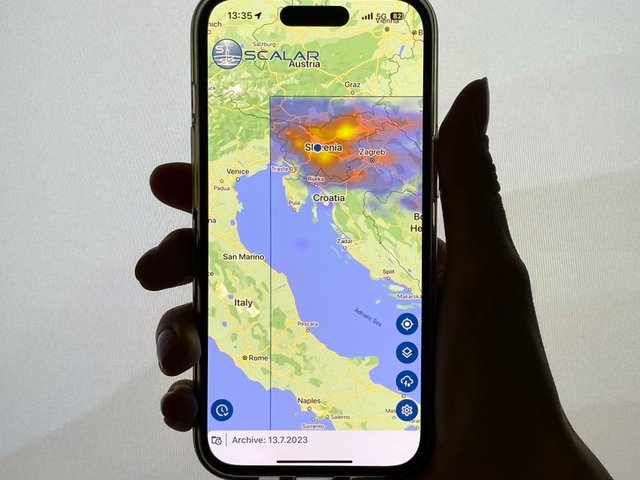
mScalar application allows users to see real time data on their mobile phone. You can monitor atmospheric discharges and radar image of rainfall in wider area of Slovenia. You can also use animated view of atmospheric discharges and rainfall in last three hours, so you can predict probability of storm and rainfall in your location, and customize your outdoor activities. With monitoring rainfall you can avoid storm or hail in time. You can access to the data anywhere in the GSM signal area.
Using the application is recommended when you visit endangered areas and for the people that are more exposed to the rainfall and lightning strikes. Application is usefull for the professional users (maintainers of electric power objects) and for the amateur users (bikers, climbers). It is a well known fact that we are more exposed to the lightning strikes in the summer if we were in the mountains. Because the electric power objects are more exposed to the lightning strikes, consequentli the maintainers of that objects are also more exposed to it.
Display:
mScalar application allows you two different display forms for lightning strikes :
Static display with zoom option: it show the newest radar image of rainfall for the Slovenia with lightning strikes positions in the last six hours, that are colored by the time legend. The picture contains the legend for strenght of the rainfall and time of the mesurement.
Dynamic display: application consecutively show radar images of rainfall and positions of lightning strikes for a maximum of three houre. Each radar image correspond to ten minutes interval which is fit to the duration of radar measurment. There are also determined the location of lightning strikes for that interval. The location of lightning strikes are colored with diffrent colours according to the time window.
Legend:
The location and strenght of rainfall is in blue shades. the darker shades mean stronger rainfall. Positions of lightning strikes are in shape of dost or squares that are colored according to the time of strike. The colours spill from red (the strike happened at least five or six hours ago) to orange and yellow, which mean that lightning strike happened at least one hour ago.
Download our app
Using the mScalar application is free for individuals, and you can download it to your mobile device via the link below:



